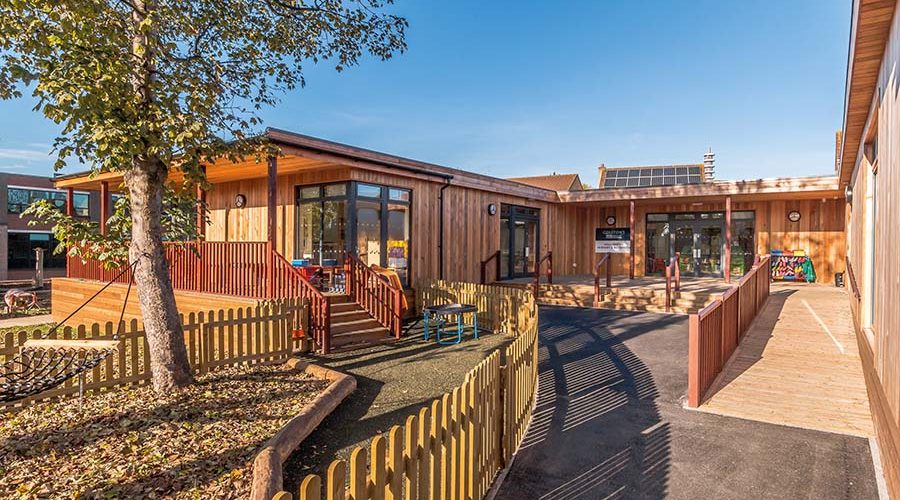Timber is the oldest and most sustainable building material ever known. Not only does its use have significantly less environmental impact than steel or concrete, it has other properties which bring additional benefits to those using an education building day in, day out. TG Escapes’ Consultant Mark Brown explores further.
TG Escapes
Timber is the only construction material that is truly sustainable. 97% of timber used in Europe is registered under the FSC and PEFC schemes resulting in the European forested area increasing by 30%.
Timber uses far less energy to harvest and manufacture (-676kg/CO2e/m3). Timber is not only a carbon sink (sun, water, carbon), it releases oxygen and improves air quality during its 60-year life cycle. Timber weighs 20% the dead weight of concrete and 6% the dead weight of steel.
According to the Athena Calculator, wood outperforms concrete and steel on a number of environmental measures.
Versus timber, concrete causes +470% more water pollution, 150% more fossil fuel consumption and 240% more smog potential. Steel causes 300% more water pollution, 140% more fossil fuel consumption and 120% more smog potential.
So, on environmental considerations alone, a timber frame building solution is a good choice. However, when constructed well, a modular timber frame system can also produce a building which is net-zero carbon in use and one that looks and feels much warmer than alternatives.
Weitzer Parkett, ProHolz Austria and partners undertook a research project called ‘School Without Stress’ where the idea was to try to scientifically demonstrate the advantages of using timber within a classroom and its long-term benefits to students who study within them. They found that on average, children in a timber classroom had 8600 less heart beats per day than those in a traditional building.
At TG Escapes, we combine the use of natural materials with floor-to-ceiling windows and doors and covered decking areas for easy access to the outdoors. This enhances wellbeing and educational outcomes.
A study by A Sigman shows that children exposed to nature:
• Scored higher on concentration and self-discipline
• Improved awareness, reasoning and observational skills
• Better reading, writing, maths, science and social studies
• Were better at working in teams
• Showed improved behaviour overall.
We conduct regular research amongst customers in education to understand how our timber frame buildings perform as classrooms, SEND spaces, studios, early years settings and more.
The feedback shows that these ‘natural’ buildings provide spaces which feel very different to other types of buildings.
One headteacher comments: “Giving the children a new setting to learn in has had a big impact on their motivation. Working amongst natural surroundings has enhanced the imagination and creativity.
“Talking to the pupils about the eco-friendly features has been a great way to teach them about sustainability and the environment.” Another states: “The environment
seems settled and calm. Children are able to focus on learning. It’s had a very positive impact on staff wellbeing.”
“Both children and staff have really enjoyed working in this lovely new classroom, with easy access to the outdoors for play. A welcome bonus is that we have saved significantly on energy costs!” comments an education leader.









